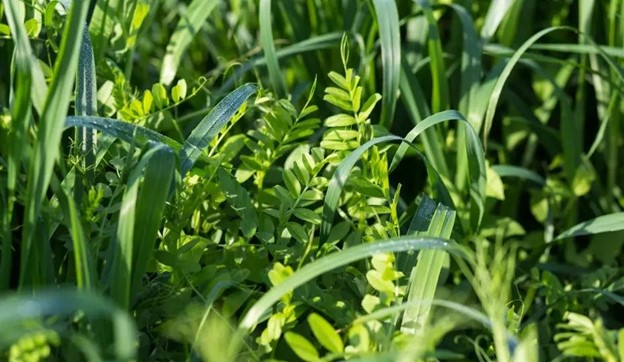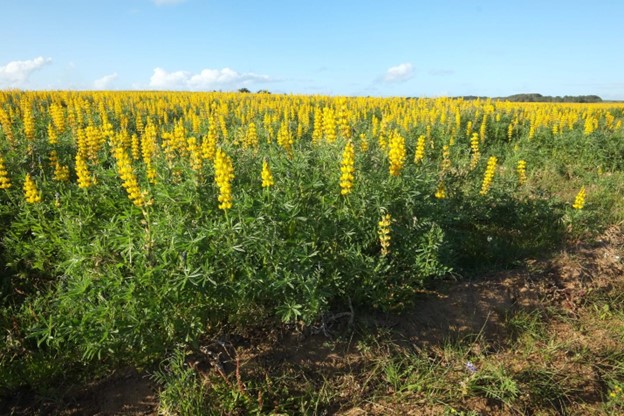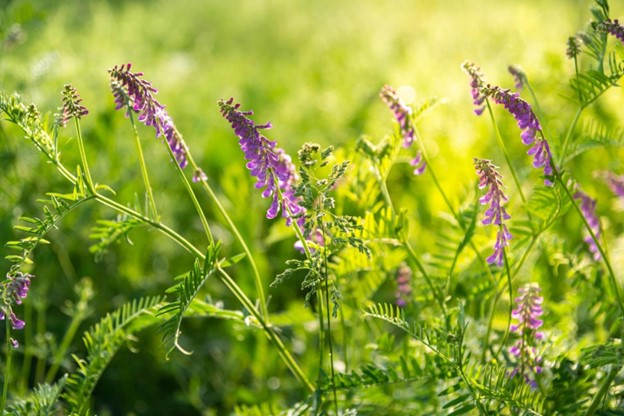
Infertile land? It’s time to change it! Check which plants will provide your crops with valuable nutrients.
If the soil in your garden is compact and clayey, it’s best to wait with growing vegetables, and in the first year sow undemanding plants that, thanks to their sizable roots, reach deep into the soil. As a result, they will loosen it considerably and retain nutrients. In addition, they will take up mineral compounds that are poorly absorbed by other plants. They will also increase the amount of nitrogen in the soil since the symbiotic bacteria associated with them can fix nitrogen from the atmosphere.
We present a step-by-step guide on how to prepare an organic fertilizer that will help you prepare the soil on wasteland or regenerate soil that is too heavily used and depleted.
If you want to learn more helpful gardening tips, click here.
How to choose a plant for the type of soil?
In the role of plants for green manure, legumes and bean crops such as lupine, plush, mustard, vetch, oats, serradella, phacelia, as well as buckwheat, alfalfa, clover, white mustard, and fenugreek will work best.
However, it is worth selecting them according to the type of soil, which needs to be refined and prepared for cultivation or regenerated after an intensive period.
Here are examples of plants:
- light soils: yellow lupin, serradella, hairy vetch (winter plant), blue phacelia, white mustard,
- medium soils: yellow lupine, field pea, common vetch,
- Heavy soils: faba bean, field pea, seed vetch, common vetch, spring and winter rapeseed.
How to sow plants for green fertilizer?
The best time for sowing is August and September. Butterfly and bean plants are trouble-free and do not require any gardening until germination.
- Measure the field you plan to sow and calculate the sowing rate according to the instructions on the package. For best results, mix the seeds of several plants together, for example, buckwheat, alfalfa, and mustard.
- Spread the seeds on the prepared soil or sow them in rows.
- Gently cover the sowing with soil and cover it with netting to protect it from birds.
Growing and harvesting
Sufficiently grown plants are cut and leave them in the field until they wither. Then dig them into the ground 25 cm deep and let nature work. The rotting process will turn them into fertilizer and help you prepare the ground for vegetables such as lettuce, leek, and spinach.
Remember to wait a few weeks before sowing or planting new crops, as the fertilizer can inhibit plant growth.
It is worth noting that spring species are usually dug up before the onset of cold weather, that is, in late October or early November. Winter crops, on the other hand, will not be ready until spring.
Useful tools
Before sowing and planting crops, the altered soil must be thoroughly tilled to a depth of 15 – 20 cm. For this task, it is advisable to choose a powerful tool that allows you to dig over the garden, make furrows and aerate the soil, i.e. a rotary tiller.
The most common models of gasoline tillers are the SRC 36 V, SRC 550 RG, or SRC 685 RG. They are robust and durable, yet precise and maneuverable. If you want to know how to choose a tiller for your garden, be sure to read this article.
To improve the quality of infertile, compacted, or sterilized soil, there are quite a few methods! One is to make a natural, inexpensive, and environmentally friendly fertilizer from green plants, including beans and legumes.


